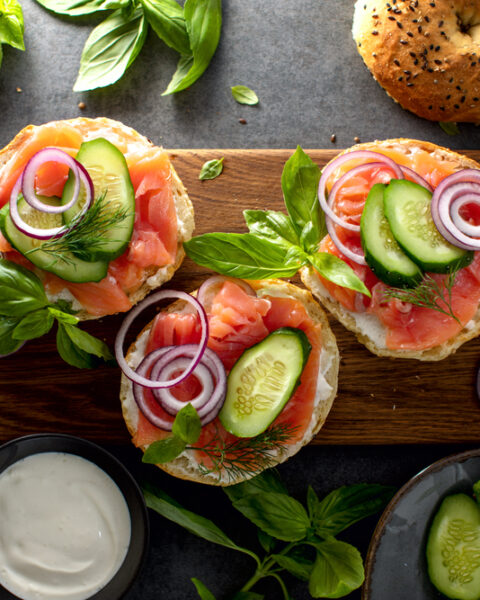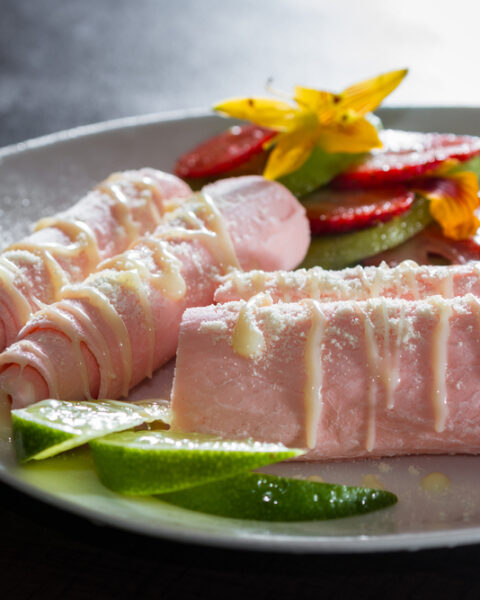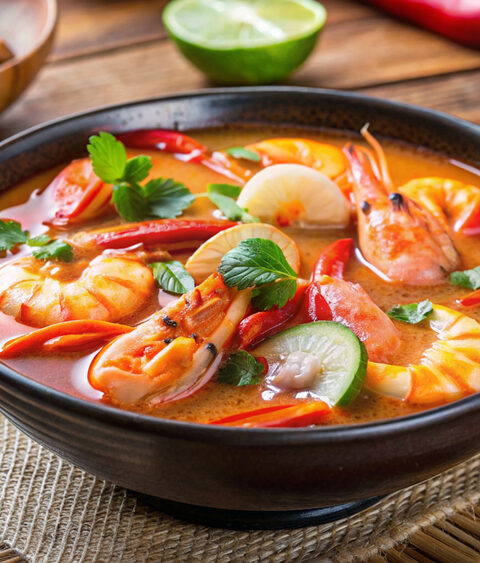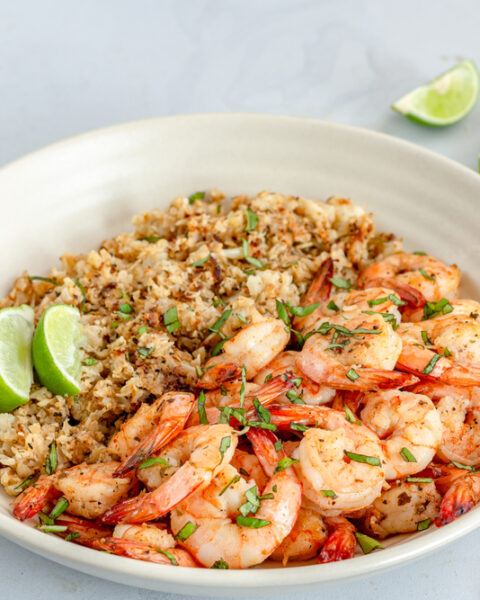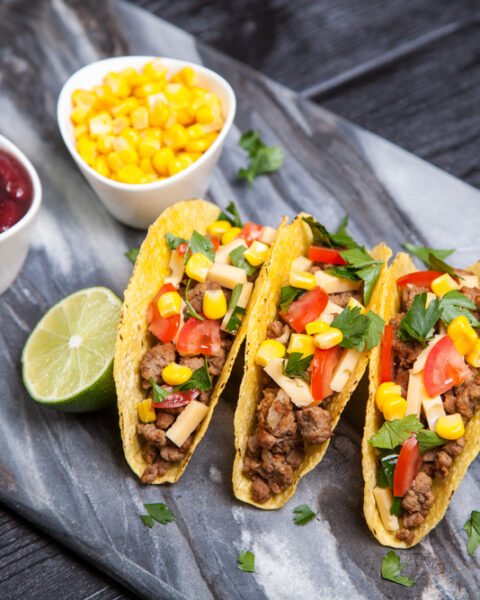New Year’s Day is the perfect time to gather around the table and enjoy dishes that carry special meaning and traditions from all over the world. Each culture has its own way of celebrating, with foods that symbolize prosperity, luck, and fresh beginnings. From hearty soups to sweet breads, there’s something here for everyone to try. Let’s dive into these flavorful traditions and bring a little global celebration to your New Year’s table!
Contents
- 1 Hoppin’ John (United States)
- 2 Oliebollen (Netherlands)
- 3 Toshikoshi Soba (Japan)
- 4 Cotechino con Lenticchie (Italy)
- 5 Kransekage (Denmark/Norway)
- 6 Tteokguk (South Korea)
- 7 Vasilopita (Greece)
- 8 Sauerkraut with Pork (Germany)
- 9 Twelve Grapes of Luck (Spain)
- 10 Pickled Herring (Poland/Scandinavia)
- 11 Lentil Soup (Brazil)
- 12 Bibingka (Philippines)
- 13 King Cake (France/United States)
- 14 Rosca de Reyes (Mexico)
- 15 Collard Greens (Southern United States)
- 16 Caviar (Russia)
- 17 More From RetailShout
- 18 15 Classic Midwest Comfort Foods That Everyone Should Try
- 19 15 Throwback Soda Flavors You Can’t Find Anymore
Hoppin’ John (United States)
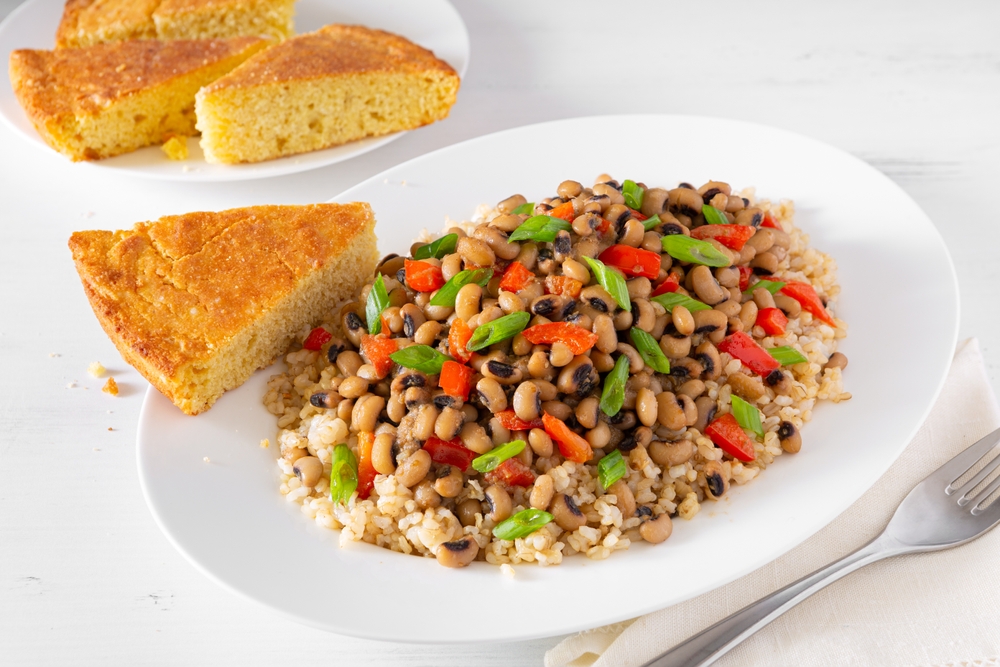
Hoppin’ John is a Southern comfort food traditionally eaten to bring prosperity and good fortune in the new year. The dish features black-eyed peas, symbolizing coins, paired with rice, and often flavored with smoky meats. To make it, sauté 1 cup of diced onions and 1/2 cup of diced bell peppers in 2 tablespoons of oil until softened, then add 1 cup of black-eyed peas and 1 cup of uncooked rice. Pour in 2 cups of chicken broth and add 1/2 cup of diced smoked ham or sausage for depth of flavor. Let it simmer until the rice absorbs all the liquid, and season with salt, pepper, and a pinch of cayenne before serving. This hearty dish is believed to bring a year filled with wealth and prosperity.
Oliebollen (Netherlands)
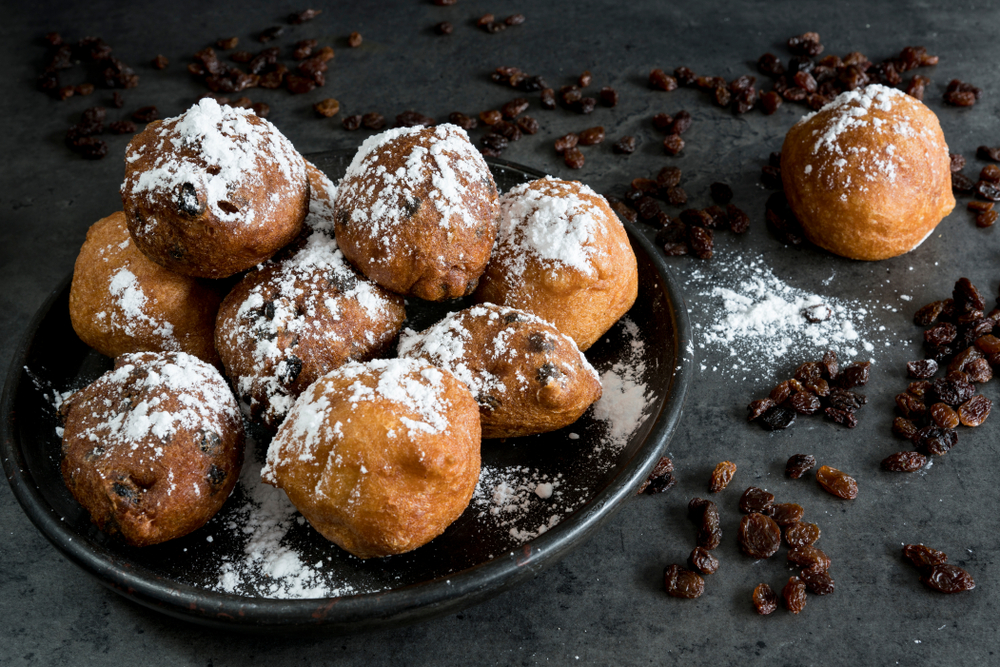
Oliebollen, or Dutch doughnuts, are a quintessential New Year’s Eve treat in the Netherlands, symbolizing abundance and joy. These fried balls of dough are fluffy on the inside and crispy outside, often studded with raisins or currants. To prepare, mix 2 cups of flour, 1 teaspoon of yeast, 1 tablespoon of sugar, and a pinch of salt, then stir in 1 cup of warm milk and 1 beaten egg. Fold in 1/2 cup of raisins, let the batter rise for an hour, and fry spoonfuls in hot oil until golden. Once cooled slightly, sprinkle generously with powdered sugar, creating a dessert perfect for celebrations.
Toshikoshi Soba (Japan)
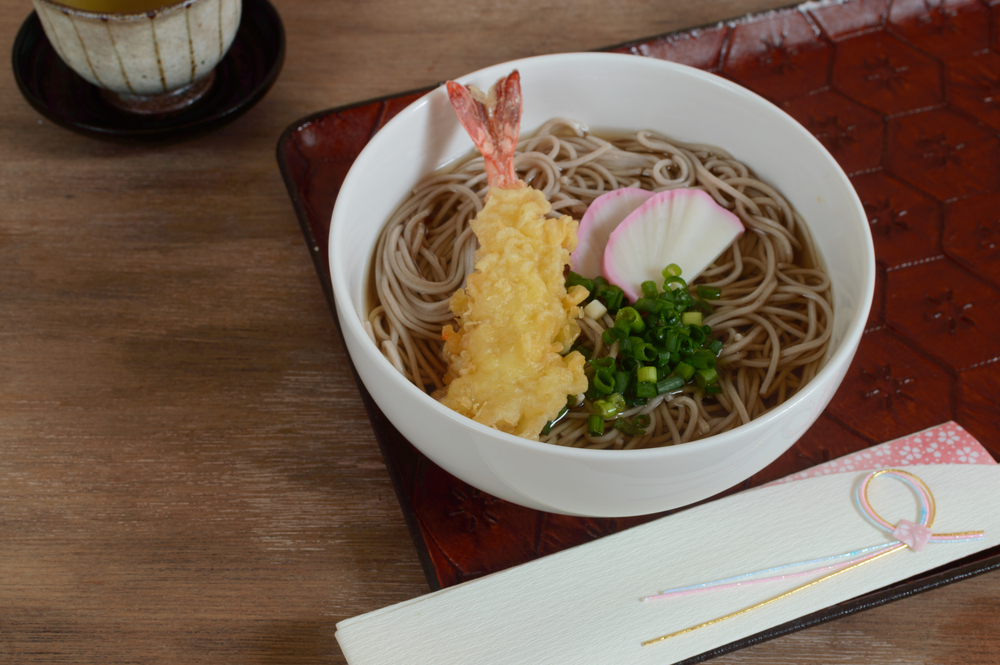
Toshikoshi Soba, translating to “year-crossing noodles,” is a Japanese tradition symbolizing resilience and longevity. The long, thin buckwheat noodles are served in a light, umami-packed broth. Start by boiling 200 grams of soba noodles until tender, then rinse them under cold water to prevent overcooking. Simmer a broth made with 3 cups of dashi stock, 2 tablespoons of soy sauce, and 1 tablespoon of mirin. Serve the noodles in bowls, ladle the broth over them, and garnish with sliced green onions and optional toppings like tempura or fish cakes for extra texture and flavor.
Cotechino con Lenticchie (Italy)
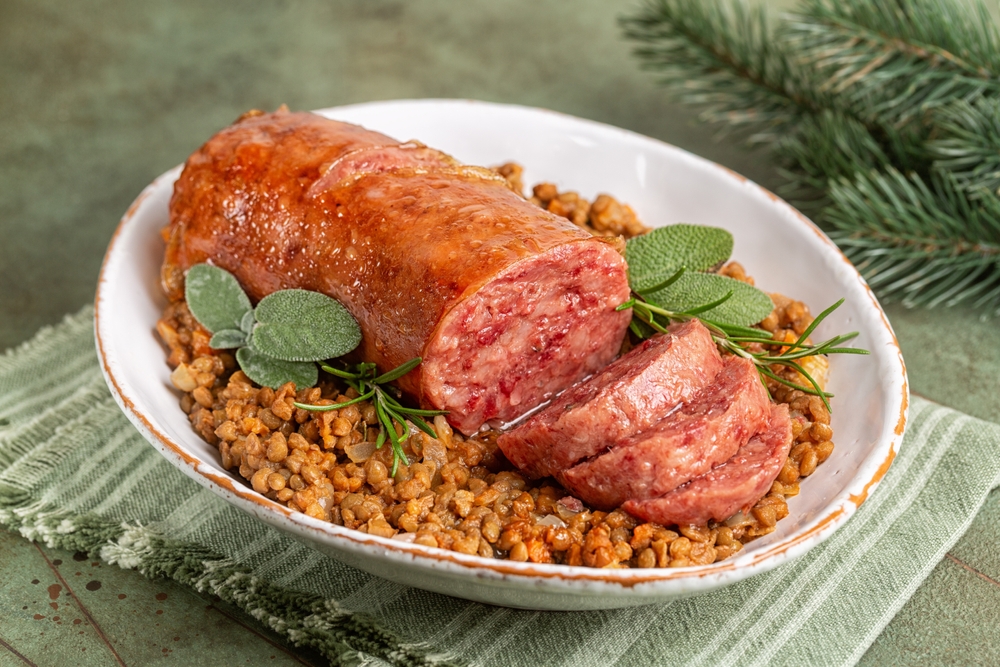
Cotechino con Lenticchie is an Italian dish enjoyed on New Year’s Day, with lentils symbolizing coins and prosperity. The meal pairs a rich, flavorful pork sausage with tender lentils in a savory broth. Simmer a 1-pound cotechino sausage in water for about 2 hours. Separately, sauté 1 diced onion, 1 diced carrot, and 1 celery stalk in 2 tablespoons of olive oil, then add 1 cup of lentils and 2 cups of broth. Simmer until the lentils are soft, season with salt and pepper, and serve the sausage sliced over the lentils for a satisfying and symbolic feast.
Kransekage (Denmark/Norway)
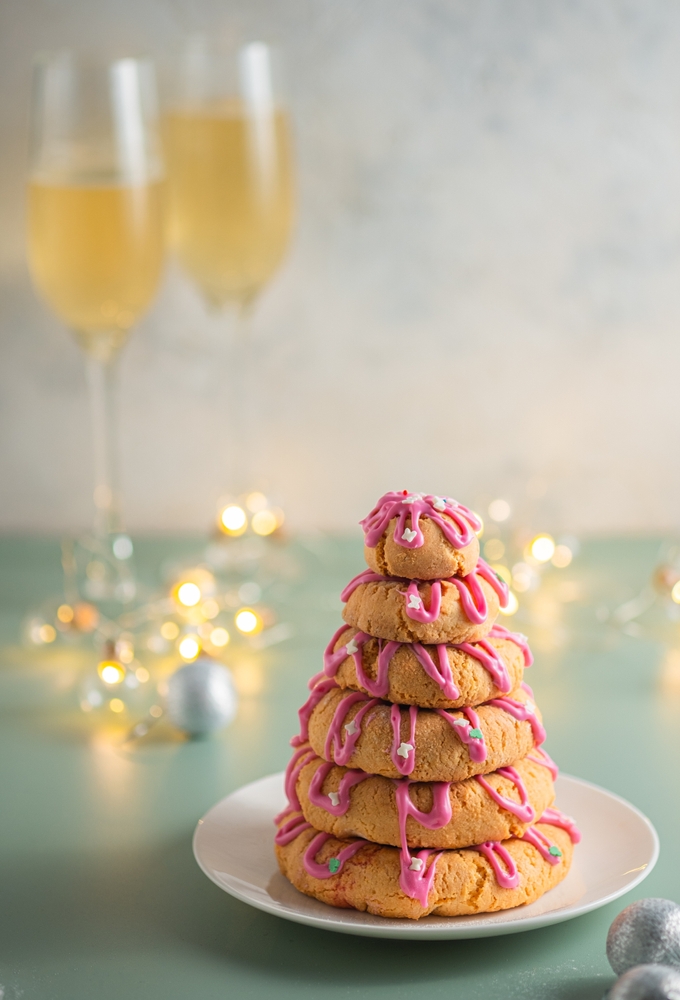
Kransekage is a towering almond ring cake popular in Denmark and Norway during New Year’s celebrations, symbolizing unity and prosperity. This dessert consists of concentric rings of almond-based dough stacked into a pyramid. To make the dough, mix 500 grams of ground almonds with 250 grams of powdered sugar and 3 egg whites to form a paste. Shape the dough into rings of descending sizes, bake them at 375°F (190°C) until golden, and cool completely. Assemble the rings into a tower and drizzle with icing made from 1 cup powdered sugar and 2 tablespoons of water, making a dessert as visually stunning as it is delicious.
Tteokguk (South Korea)
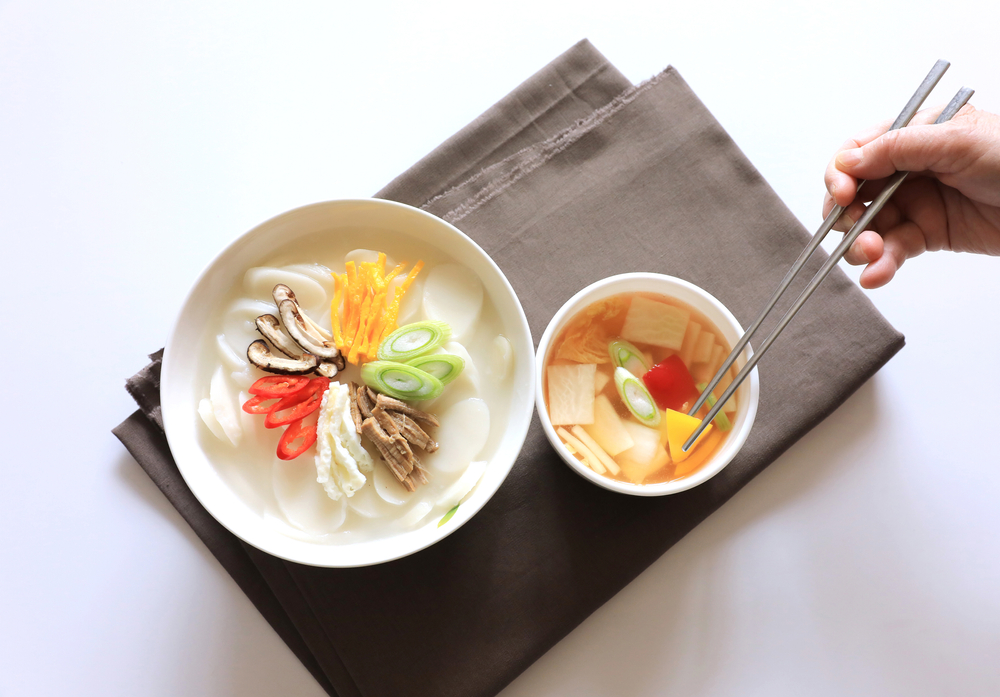
Tteokguk is a traditional Korean soup eaten on New Year’s Day to symbolize a fresh start and gaining an additional year in age. Its clear broth and chewy rice cakes create a comforting and symbolic meal. Start by simmering 4 cups of beef or anchovy broth with 2 minced garlic cloves to develop a rich base. Add 2 cups of sliced rice cakes, cooking until they soften, and season with 2 teaspoons of soy sauce and a pinch of salt. Garnish with sliced egg omelet, seaweed strips, and green onions before serving, completing a dish that embodies renewal and hope.
Vasilopita (Greece)
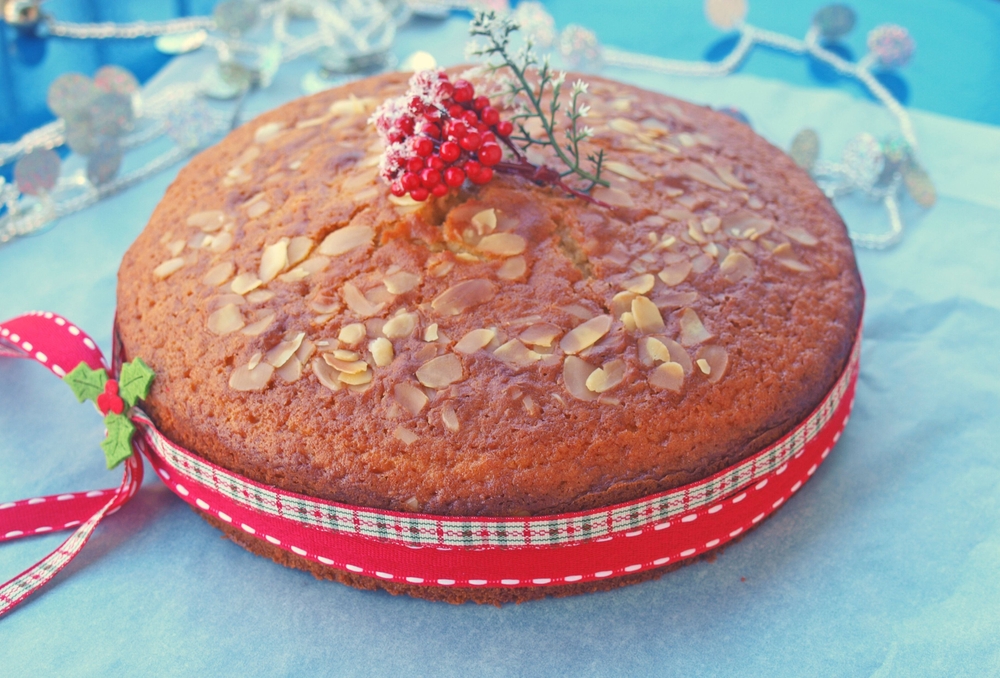
Vasilopita, a Greek New Year’s cake, celebrates St. Basil with a hidden coin inside to bring luck to the finder. This sweet, citrus-flavored bread is a staple at midnight celebrations. Cream 1/2 cup of butter with 1 cup of sugar, then mix in 3 eggs and the zest of 1 orange. Gradually add 2 cups of flour, 1 tablespoon of baking powder, and 1/2 cup of milk, creating a smooth batter. Pour into a greased pan, insert a foil-wrapped coin into the batter, and bake at 350°F (175°C) for 40-45 minutes before dusting with powdered sugar.
Sauerkraut with Pork (Germany)
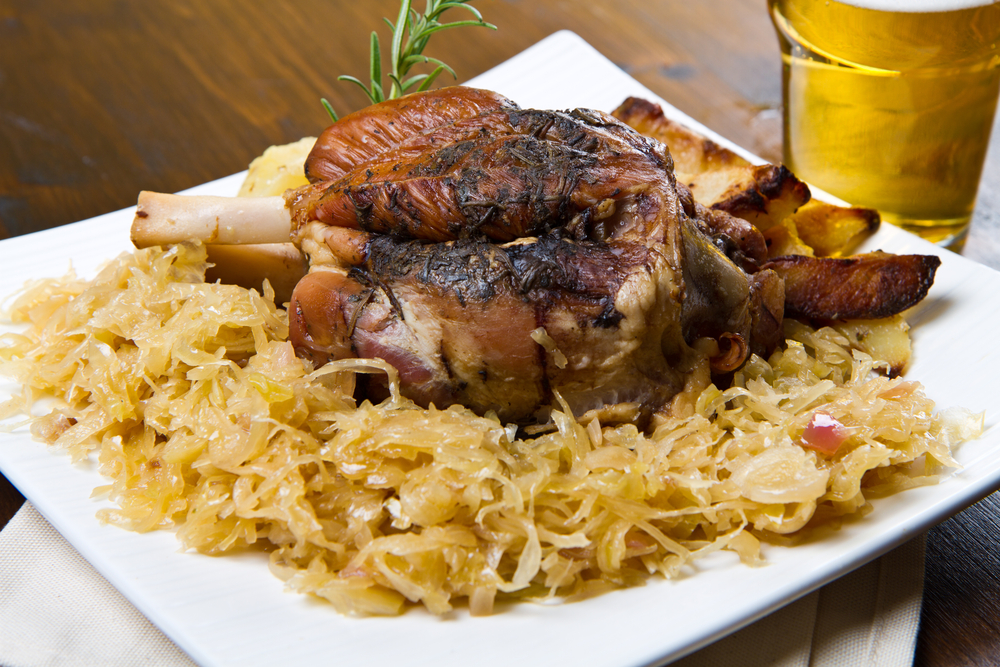
Sauerkraut with pork is a German tradition thought to bring wealth, with the shredded cabbage resembling currency. The combination of tangy sauerkraut and savory pork creates a comforting dish. Sear a 2-pound pork roast seasoned with salt and pepper in a heavy pot until browned. Add 4 cups of sauerkraut, 1 sliced onion, 1 sliced apple, and 1 teaspoon of caraway seeds, then pour in 1 cup of broth. Cover and simmer for 2 hours until tender, serving alongside boiled potatoes for a hearty and symbolic meal.
Twelve Grapes of Luck (Spain)

The tradition of eating twelve grapes at midnight is a beloved Spanish custom that symbolizes good luck and prosperity for each month of the coming year. Known as “Las Doce Uvas de la Suerte,” it’s a fun and meaningful ritual. To prepare, wash and portion 12 seedless grapes per person. Set them in small bowls, ensuring they’re easy to eat quickly. As the clock strikes twelve, eat one grape with each chime, making a wish for the months ahead—this simple yet symbolic tradition is a delightful way to start the new year.
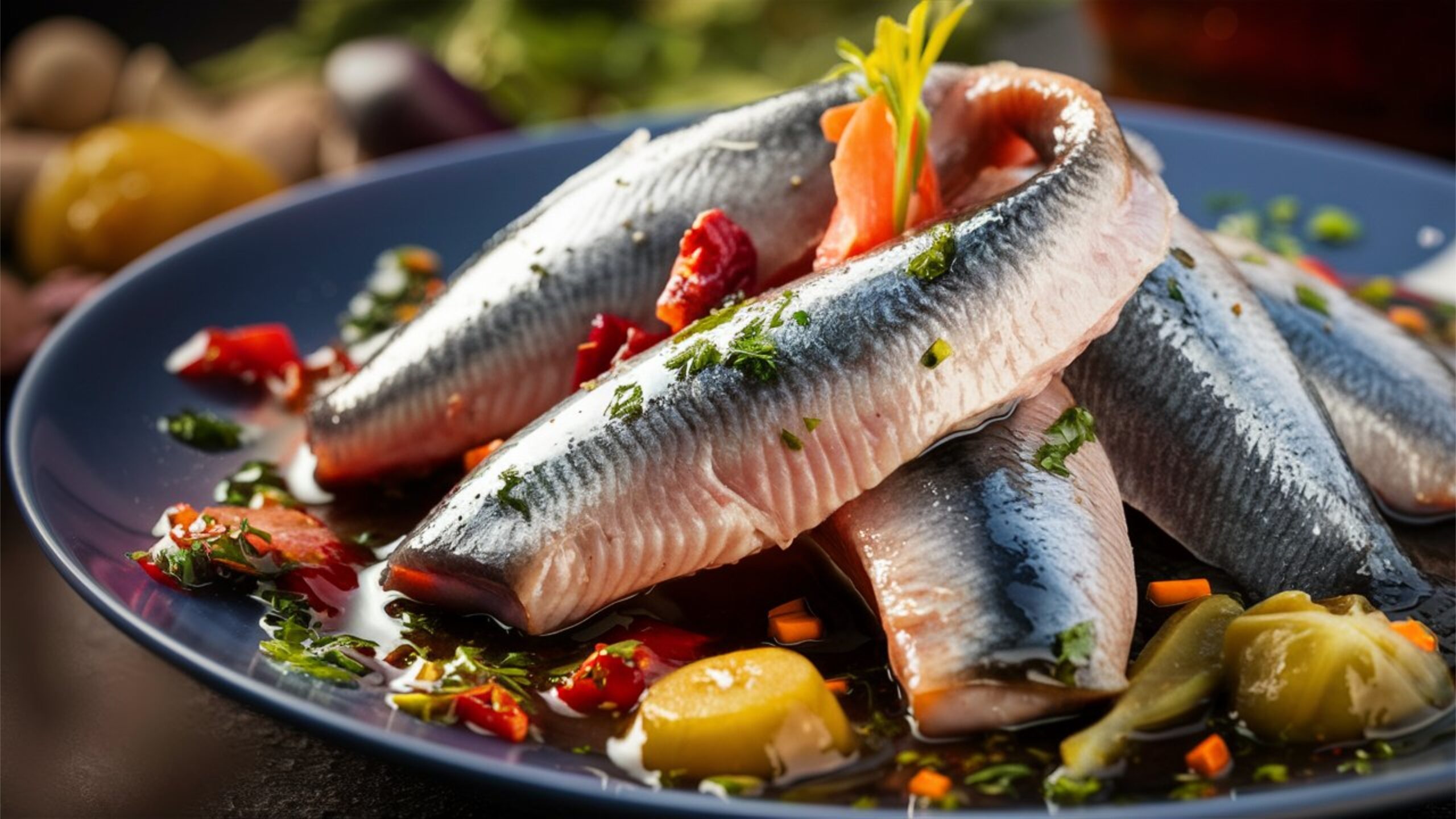
Pickled herring is a staple New Year’s dish in Poland and Scandinavian countries, believed to bring prosperity due to its silver, coin-like appearance. This tangy and flavorful dish is often paired with onions and served with rye bread. To prepare, layer 2 cups of pickled herring fillets with 1 sliced onion in a jar. Add 1/2 cup of vinegar, 1 tablespoon of sugar, 1/2 teaspoon of peppercorns, and a pinch of mustard seeds, ensuring the fish is fully covered. Let it marinate overnight in the refrigerator for maximum flavor and serve as a refreshing appetizer.
Lentil Soup (Brazil)
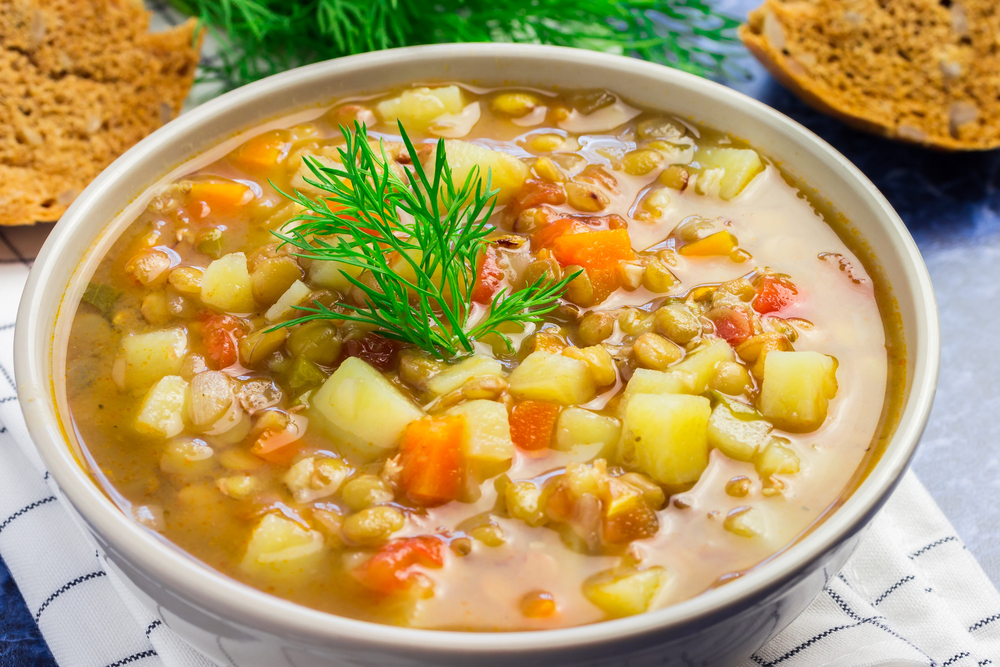
In Brazil, lentil soup is a popular New Year’s dish, with lentils symbolizing wealth and prosperity due to their coin-like shape. This simple yet flavorful soup is often enjoyed with bread. Sauté 1 diced onion, 2 minced garlic cloves, and 1 diced carrot in 2 tablespoons of olive oil until softened. Add 1 cup of lentils, 4 cups of vegetable broth, and 1 bay leaf, then simmer for about 30 minutes until the lentils are tender. Finish with a sprinkle of chopped parsley and a squeeze of lemon juice for brightness.
Bibingka (Philippines)
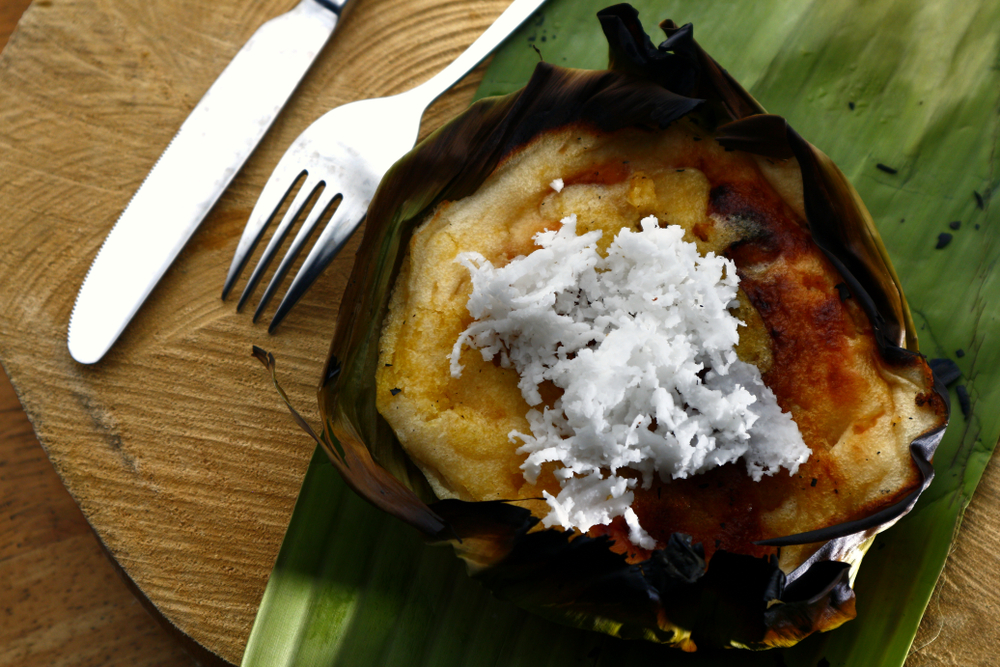
Bibingka is a Filipino rice cake traditionally enjoyed during the holiday season and often part of New Year’s celebrations. It has a soft, moist texture and a slightly smoky flavor from being baked in banana leaves. To make, mix 1 cup of rice flour, 1/2 cup of sugar, 1/2 cup of coconut milk, and 2 eggs into a smooth batter. Pour into a banana leaf-lined pan, top with salted egg slices and grated cheese, and bake at 375°F (190°C) for 20-25 minutes. Serve warm with a sprinkle of shredded coconut for a unique and festive dessert.
King Cake (France/United States)
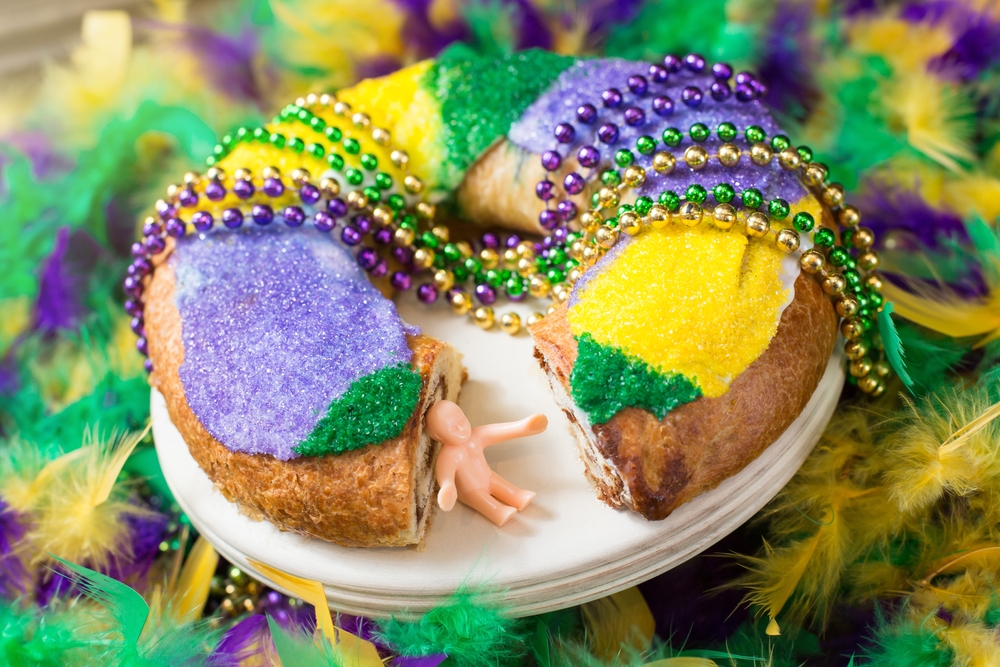
King Cake, popular in France and parts of the southern United States, is a vibrant, ring-shaped pastry traditionally eaten around New Year’s and Mardi Gras. It’s filled with sweet almond cream and decorated with colorful icing. To make, roll out 1 pound of puff pastry, spread 1 cup of almond cream (made with 1/2 cup almond flour, 1/4 cup sugar, and 1 egg), and fold the dough into a ring shape. Bake at 375°F (190°C) until golden, then drizzle with icing made from 1 cup powdered sugar and 2 tablespoons milk, and decorate with colored sugar. The hidden figurine or coin in the cake brings luck to the finder.
Rosca de Reyes (Mexico)
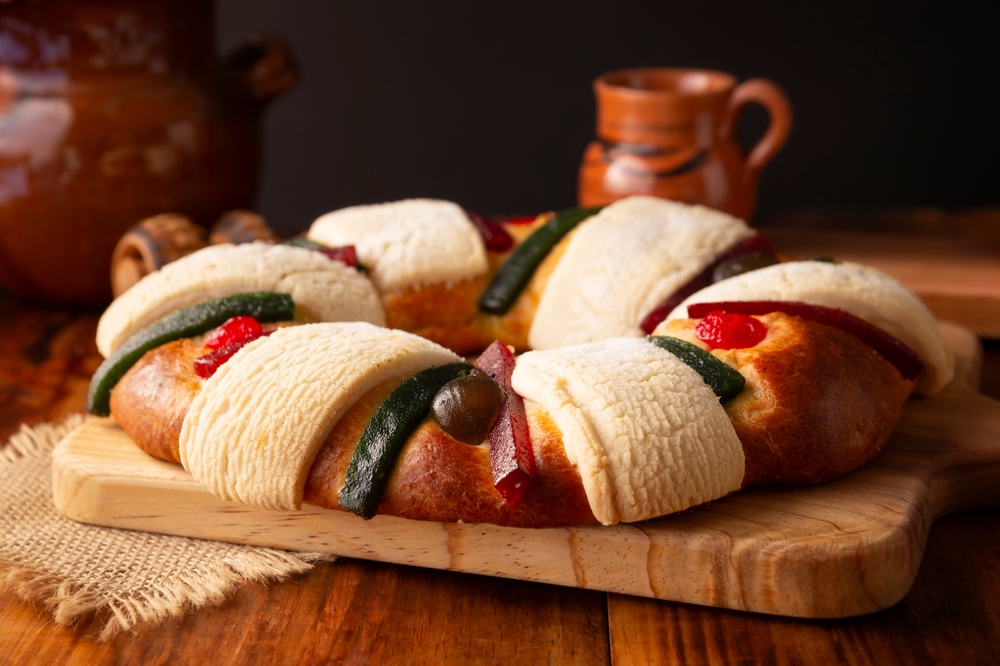
Rosca de Reyes is a Mexican sweet bread shaped like a wreath and traditionally enjoyed around New Year’s and Epiphany. Its fruity toppings and hidden figurine make it festive and meaningful. Prepare the dough by mixing 4 cups of flour, 1/2 cup sugar, 1 tablespoon yeast, 1/2 cup milk, and 3 eggs. Shape the dough into a ring, decorate with candied fruits, and bake at 350°F (175°C) until golden. Dust with sugar and slice to see who finds the figurine, symbolizing a blessed year ahead.
Collard Greens (Southern United States)
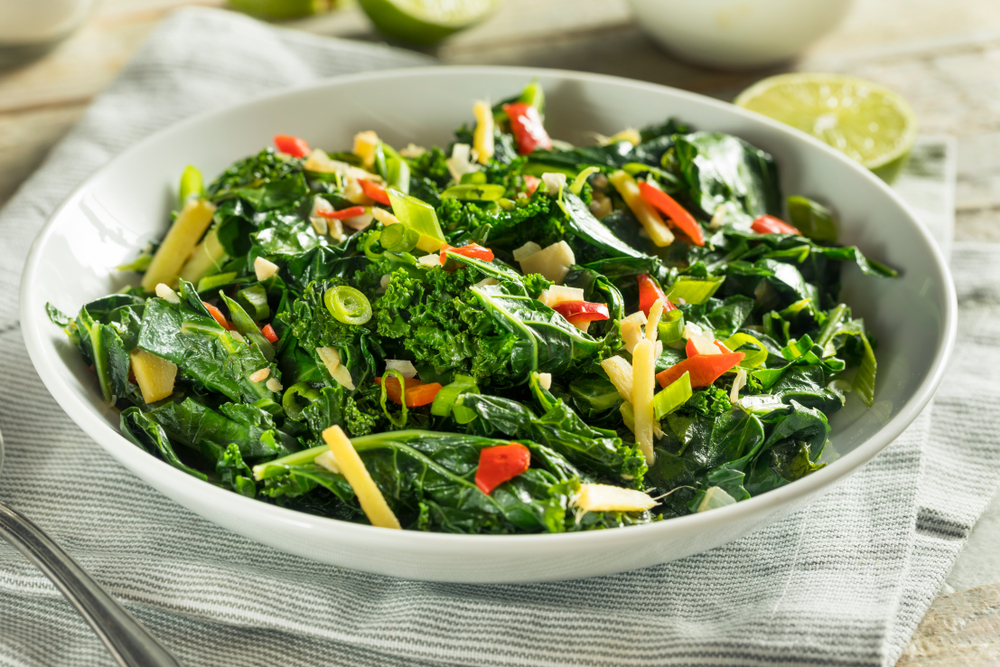
Collard greens are a Southern staple on New Year’s Day, symbolizing money and wealth with their green, leafy appearance. Cooked low and slow, they develop a rich, savory flavor. To prepare, sauté 1 diced onion in 2 tablespoons of oil, then add 1 pound of chopped collard greens. Pour in 2 cups of chicken broth and 1/4 teaspoon of red pepper flakes. Simmer for about 45 minutes until tender, and serve as a side dish with cornbread.
Caviar (Russia)
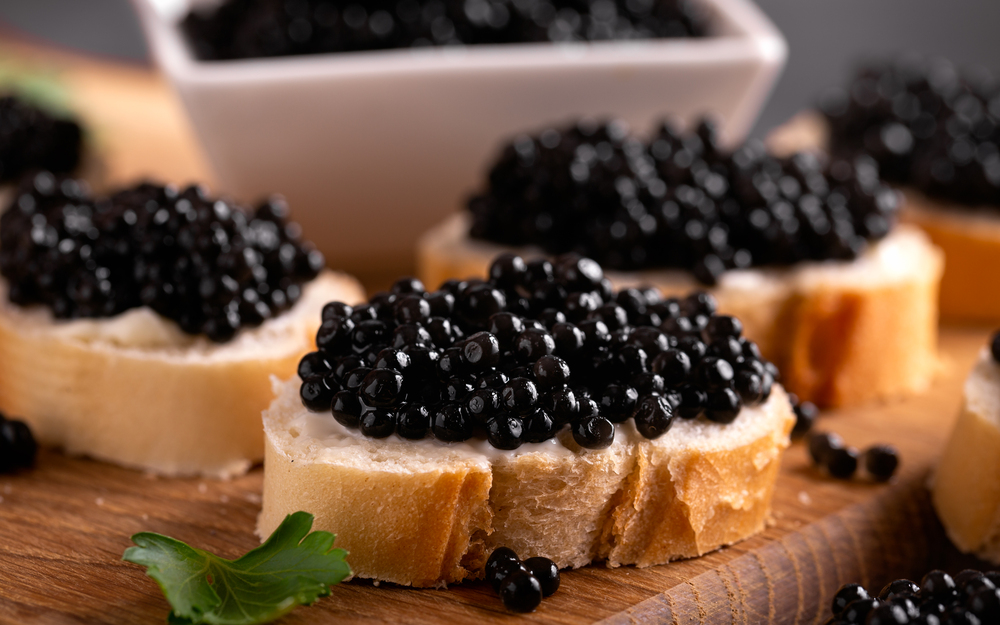
In Russia, caviar is a luxurious New Year’s delicacy symbolizing abundance and celebration. The tiny, shimmering eggs are often served with blini or crackers. Arrange 4 ounces of caviar on a platter with 1/2 cup of sour cream, 2 tablespoons of chopped chives, and 12 small blini. Spread a little sour cream on each blini, top with caviar, and garnish with chives. This elegant dish is perfect for festive gatherings.
This article originally appeared on RetailShout.
More From RetailShout
18 Decadent Chocolate Treats You Can Whip Up in Under an Hour
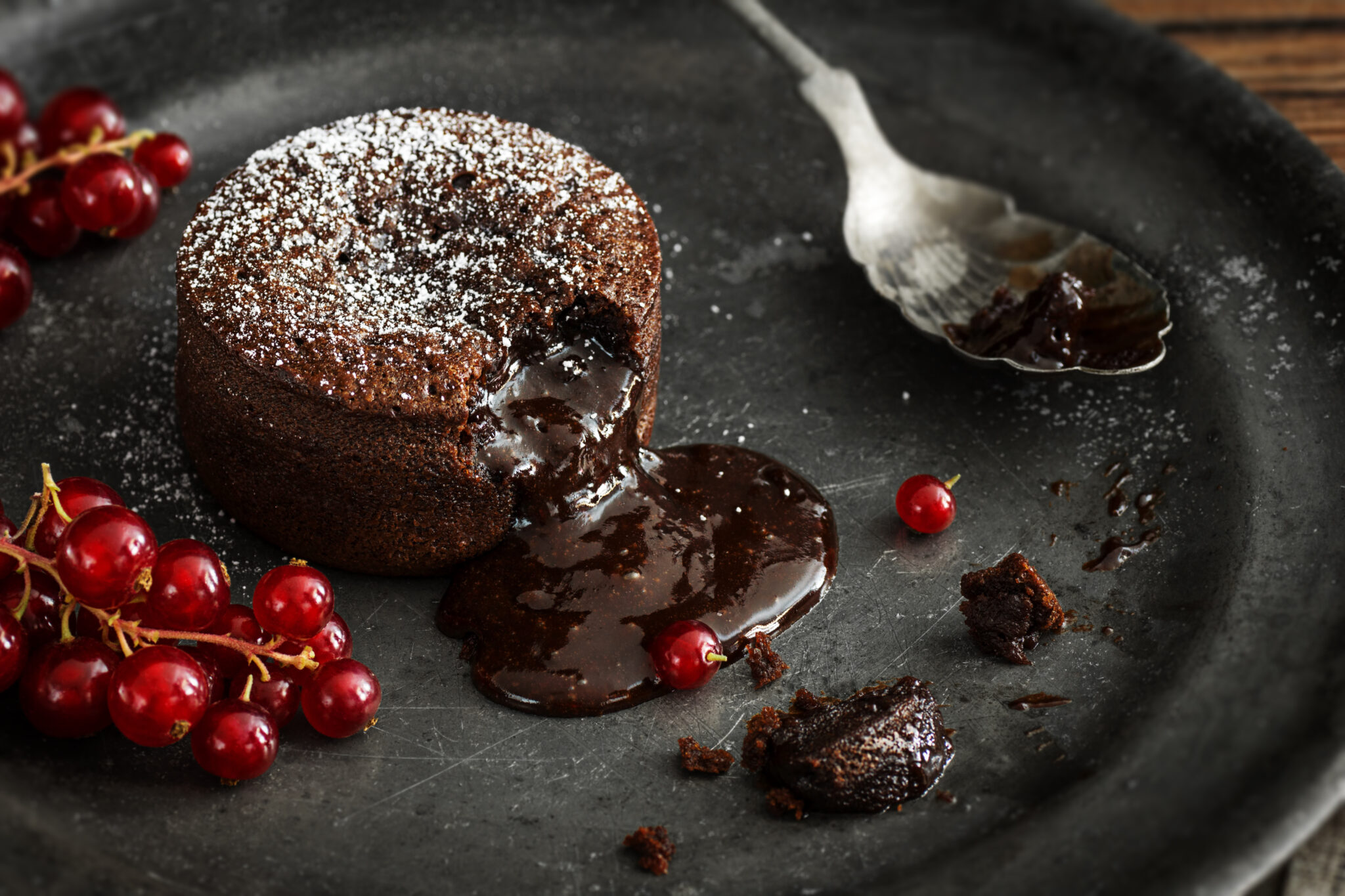
We’ve all daydreamed about having a golden ticket to a chocolate factory, surrounded by endless sweets and rivers of rich cocoa. While that might be a fantasy, whipping up your own decadent chocolate treats doesn’t have to be! In under an hour, you can create indulgent, chocolatey delights that rival anything from a candy maker’s dream. Read More.
15 Classic Midwest Comfort Foods That Everyone Should Try
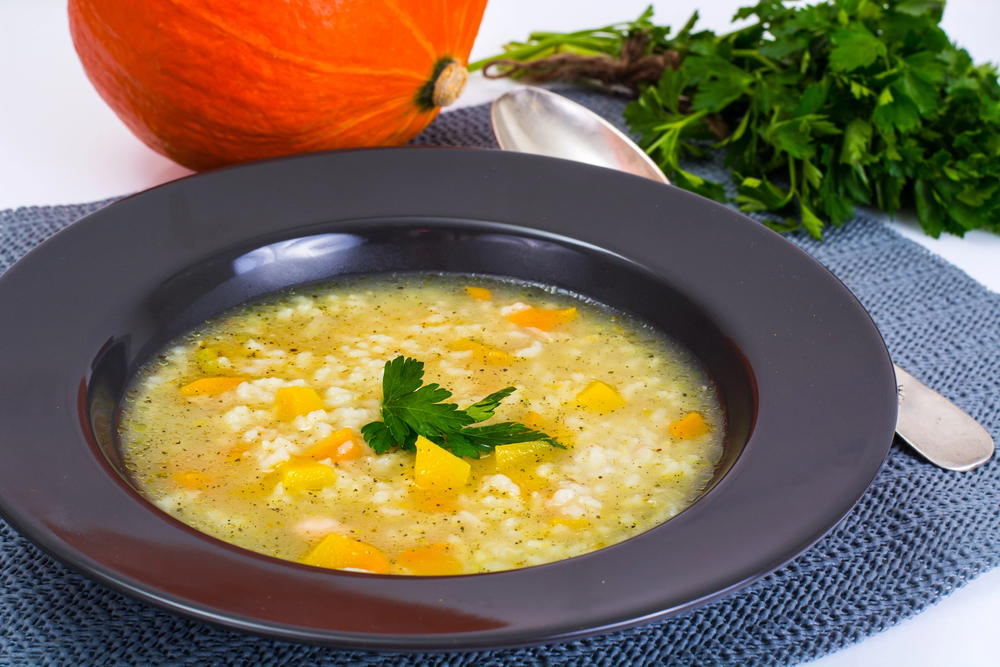
The Midwest is known for its hearty, comforting dishes that are perfect for any season. Whether it’s a cold winter night or a summer potluck, Midwest comfort foods always hit the spot. Read More.
15 Throwback Soda Flavors You Can’t Find Anymore

Nostalgia hits differently when it comes to soda. Over the years, many creative soda flavors have come and gone, leaving us with fond memories and a sense of loss. This list takes a trip down memory lane, celebrating 15 throwback soda flavors that are no longer around, each with its own story to tell. Read More.

